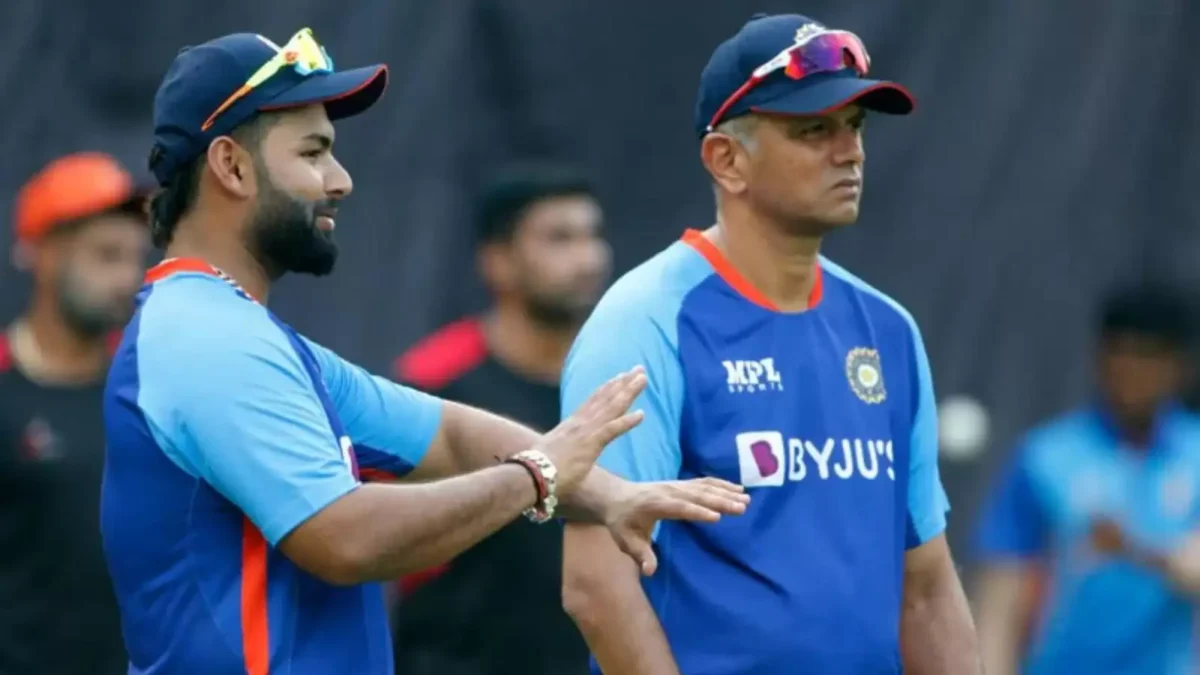
India battled it out over five games against a resurgent South African side and came out with a 2-2 scoreline.

As rain played spoilsport in Bangalore and ended an otherwise exciting five-match T20I series with a drawn 2-2 scoreline, we take a look at some of the positives and learnings for India from their battle against the South Africans heading towards the T20 World Cup in Australia.
It is one thing to pay lip service to the need for consistency in selection and completely another to follow it to the hill, especially when your team loses and millions call for your head. As India’s head coach, Rahul Dravid has backed his eye for talent and persisted with them through thick and thin.
Dravid has been championing the cause for flexibility in roles that players play for their IPL teams and when they walk into an Indian dressing room. But he hasn’t compromised on the pecking order and given those on the bench ample opportunities to prove their case.
He played the same playing XI throughout the series, not as he felt the team lacked ideal backups in place but quite simply because he didn’t want to give anyone one less of an opportunity and regret that later. Two players – Ishan Kishan and Avesh Khan – were major beneficiaries of the same.
Kishan, whose form leading into the series was horrendous, looked like regaining his lost mojo against South Africa, ending with a strike-rate of 150.36 while averaging 41.20. Khan, one of the backup seamers, enjoyed firm backing and delivered a spell of 4/18 in the win in Rajkot, besides finishing the series with an economy rate of 7.00.
The only time Bhuvneshwar Kumar looked a little out of stocks in this series is when, with the game firmly in his team’s grasp, David Miller decided to go after India’s lead pacer in Delhi. Either side of that, Bhuvneshwar owned it, with the new ball and the death, through his four spells.
Facing question marks over his fitness and form before the start of the summer, Bhuvneshwar has been a bowler rejuvenated from the beginning of the IPL 2022 for Sunrisers Hyderabad (SRH). The experienced seamer took only 12 wickets for SRH but he took them conceding only 7.34 an over on flat pitches. Bowling all the difficult overs, Bhuvneshwar had a powerplay ER of 5.92 and went for a highly respectable 8.60 an over at the death.
Continuing his great form, he went for 3.55 an over inside the powerplay against the South Africans, with 4 wickets to his name. His death-overs ER of 10 was largely spoiled by Miller’s assault at the end in Delhi. Since the beginning of the year, Bhuvneshwar has maintained an economy rate of 6.78 with 11 wickets in T20Is.
Oppositions beware. He is back!!
Five successive boundaries off the bowling of Anrich Nortje on his way to a match-winning half-century in India’s comeback win in Vizag would’ve uplifted the spirits of Ruturaj Gaikwad. But here’s the thing, the batter still ended the series averaging 19.20 with a low-key strike-rate of 131.50. Gaikwad’s pace record from this: average 21; strike-rate 133.33.
As the series went on, Gaikwad’s pace issues became more visible as the South Africans dropped the ball short and targetted his body off hard lengths. A similar theme came to light in the IPL 2022, where Gaikwad struck at only 130.49 against all seamers, averaging 24.25.
The player will have to improve on this front and do it quickly if he is to stay intact in the race to bag a T20 World Cup spot.
If there is a soul unhappy in the cricket world for Dinesh Karthik right now, he must immediately get his heart checked. For their probably never been such overwhelming reception of an India comeback in the recent history. When Karthik was beginning to feel like a thing of the past, he re-emerged like a breath of fresh air and inspired many by donning the India jersey aged 37.
The veteran wicketkeeper-batter played an astonishing knock in the Rajkot T20I versus South Africa, blasting a match-winning 55 off 27 deliveries to help India achieve series parity. That was an innings set in stone from a few months, as he has been incredible with the bat since the beginning of this year’s IPL.
Playing the difficult end-overs duties for Royal Challengers Bangalore (RCB), Karthik dominated his way to 330 runs at a strike-rate of 183.33 while averaging 55. He needed a turnaround of such magnitude to find his spot back in the Indian side and stake claim a regular place ahead of the T20 World Cup.
It was heartening to see Dravid standing firmly behind Pant in the aftermath of the series. Facing questions from all corners over the left-hander’s form – only 58 runs over five innings – and suggestions of his sacking, Dravid kept his calm and reinforced that Pant is going nowhere. That would’ve felt soothing to the stand-in India skipper.
But there is something to be said about Rishabh Pant’s failures and just the way he has tended to get out, taking excessive risks without perhaps backing his undoubted ability to overcome a particular challenge.
South Africa going wider to deny Pant deliveries in the arc was a smart ploy. But you’d expect over five innings for him to counter that with maturity. Instead, Pant tried to hoick this line from the frontfoot repeatedly, without ever finding the optimum connection.
That, essentially, has been a theme with Pant’s T20I career, where teams have used the difficult lengths and spread of fields to play to his ego a little bit. He now has a strike-rate of 123.91 with an average of 23.15 after 42 innings in T20Is. He is a much, much better player than that.